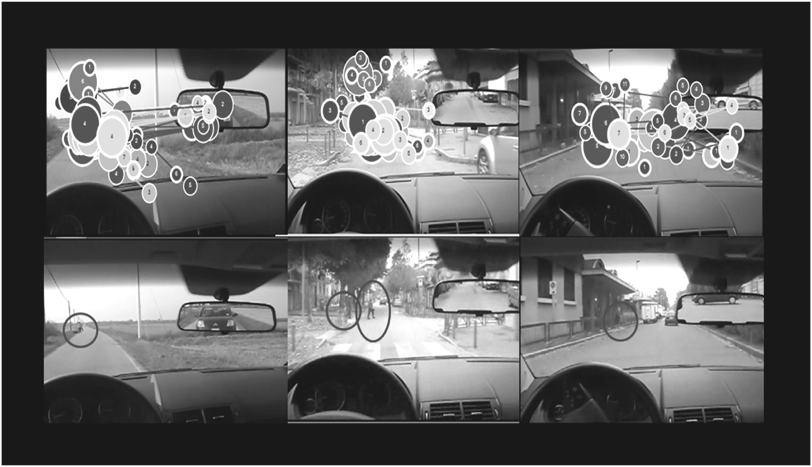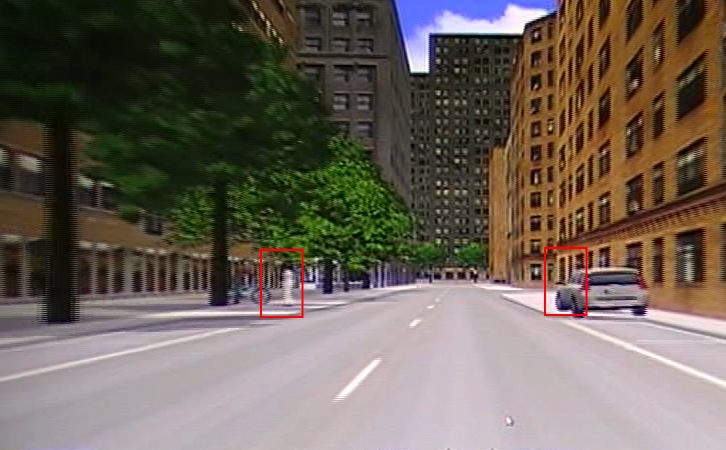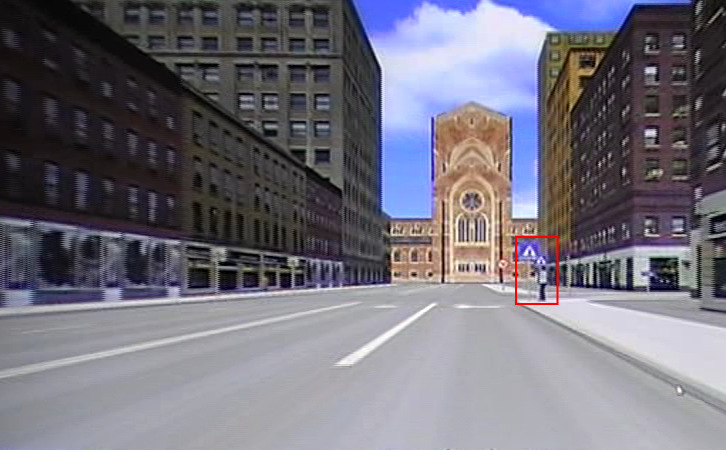- Milano
- Traffic Psychology Research Unity: mobility, safety and sustainability
- Research
- Themes
- Pedestrian detection
Pedestrian detection
The ability to effectively explore the visual field is what an expert driver needs to monitor the environment and to detect the routine events and hazards on the road. The main aims of the present reserach are to investigate: 1. how new drivers explore their visual field while viewing an hazard (i.e., pedestrian crossing) on roads with different level of complexity); 2. whether self-reported driving behaviors (previously assessed using the Driving Behavior Questionnaire, D.B.Q.) are associated with the ability to explore the visual field. The D.B.Q. was administrated to 79 new drivers (19-21 years old). The subjects with highest (n = 20) and lowest DBQ scores (n = 20) participated to the experimental study: Eyes movements (fixation length and fixation count) were recorded (TOBII X120 eye-tracker) while the participants were viewing three video-clips of a driving experience on roads with growing visual complexity (0=rural background, 1=urban background with few cars, 2=urban background with a lot of cars) and a pedestrian crossing. ANOVA analysis [(3) traffic complexity X (2) beginning and ending of pedestrian crossing X (2) guide accuracy] showed significant differences in fixation length and fixation count among the visual complexity conditions; significant differences also emerged in relation to the beginning and the ending of pedestrian crossing.

Hazard detection in virtual driving context and braking reaction
In coll. with Vangi D., Virga A. Dipartimento di Ingegneria Industriale, University of Florence
EVU, Europäische Vereinigung für Unfallforschung und Unfallanalyse
A high percentage of road accidents involves pedestrians.The aim of the present research is to understand how drivers behave approaching to hazards such as pedestrian crossings. By exploiting simulators' potentialities, some driving scenarios were created manipulating the presence/absence of zebra crossings, the pedestrian road signs, and the position of the hazard. Results confirmed the hypothesis that pedestrian detection depends on the experimental variables.


